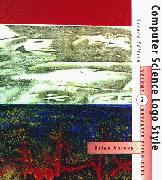Computer Science Logo Style volume 2:
Advanced Techniques 2/e Copyright (C) 1997 MIT
Computer Science Logo Style
Volume 2: Advanced Techniques
Brian Harvey
University of California, Berkeley
Below this short table of contents is an expanded table of contents
including sections within each chapter. Click on the chapter name
to jump down. You can also download the complete text of each chapter
in PDF format for elegant printing, or browse the HTML version.
Note: These books are still in copyright, and in print. They are
posted here for your personal use, not for resale or redistribution.
Thanks!
- About the projects
- About this series
- How to read this book.
- Reader and Writer
- End of File
- Case Sensitivity
- Dribble Files
- A Text Formatter
- Page Geometry
- The Program
- Improving the Formatter
This project is an implementation in Logo of the often-needed
utility program to find the changes between two versions of a file.
- Program Overview
- The File Information Block Abstract Data Type
- Saving and Re-Reading Input Lines
- Skipping Equal Lines
- Comparing and Remembering Unequal Lines
- Reporting a Difference
- Program Listing
- Quiz Program Revisited
- Nonlocal Exit and Modularity
- Nonlocal Output
- Catching Errors
- Ending It All
This project deals a simulated deck of cards and allows the user to play a
game of solitaire. The program checks for legal moves and displays the
board layout.
- The User Interface
- The Game of Solitaire
- Running the Program
- Program Structure
- Initialization
- Data Abstraction
- Stacks
- Program as Data
- Multiple Branching
- Further Explorations
- Program Listing
Text and Define
- Automated Definition
- A Single-Keystroke Program Generator
- Procedure Cross-Reference Listings
This project is a first look at what it means to compile a program.
It's simplified because it translates BASIC programs into Logo,
rather than into machine language. But it introduces the ideas that
will return in more realistic form in the third volume.
- A Short Course in BASIC
- Using the BASIC Translator
- Overview of the Implementation
- The Reader
- The Parser
- The Code Generator
- The Runtime Library
- Further Explorations
- Program Listing
This program looks for patterns in a list. It can be used,
for example, to recognize particular types of English sentences.
- Reinventing
Equalp for Lists
- A Simple Pattern Matcher
- Efficiency and Elegance
- Logo's Evaluation of Inputs
- Indirect Assignment
- Defaults
- Program as Data
- Parsing Rules
- Further Explorations
- Program Listing
- Naming Properties
- Writing Property List Procedures in Logo
- Property Lists Aren't Variables
- How Language Designers Earn Their Pay
- Fast Replacement
- Defaults
- An Example: Family Trees
This project uses the pattern matcher to carry out a conversation with the
user, pretending to be a psychiatrist. It is a Logo version of a program
originally written by Joseph Weizenbaum.
- Eliza and Artificial Intelligence
- Eliza's Linguistic Strategy
- Stimulus-Response Psychology
- Property Lists
- Generated Symbols
- Modification of List Structure
- Linguistic Structure
- Further Explorations
- Program Listing
- Recursion as Iteration
- Numeric Iteration
- Logo: an Extensible Language
- No Perfect Control Structures
- Iteration Over a List
- Implementing
Apply
- Mapping
- Mapping as a Metaphor
- Other Higher Order functions
- Mapping Over Trees
- Iteration and Tail Recursion
- Multiple Inputs to
For
- The Evaluation Environment Bug
This project is a tool to assist the user in solving cryptograms
(simple substitution ciphers). It makes some guesses automatically, and
records other guesses made by the user.
- Program Structure
- Guided Tour of Global Variables
- What's in a Name?
- Flag Variables
- Iteration Over Letters
- Computed Variable Names
- Further Explorations
- Program Listing
Localmake
- Backquote
- Implementing Iterative Commands
- Debugging Macros
- The Real Thing
This program displays graphs of the Fourier (harmonics of sine waves)
approximation to a square wave. It illustrates how harmonics are combined
to control the timbres of notes in computer-generated music.
- Square Waves
- Keyword Inputs
- Making the Variables Local
- Indirect Assignment
- Numeric Precision
- Dynamic Scope
- Further Explorations
- Program Listing
Appendices
(backmatter in PDF)
- Entering and Leaving Logo
- Tokenization
- Data Structure Primitives
- Constructors
- Selectors
- Mutators
- Predicates
- Queries
- Communication
- Transmitters
- Receivers
- File Access
- Terminal Access
- Arithmetic
- Numeric Operations
- Predicates
- Random Numbers
- Print Formatting
- Bitwise Operations
- Logical operations.
- Graphics
- Turtle Motion
- Turtle Motion Queries
- Turtle and Window Control
- Turtle and Window Queries
- Pen and Background Control
- Pen Queries
- Workspace Management
- Procedure Definition
- Variable Definition
- Property Lists
- Predicates
- Queries
- Inspection
- Workspace Control
- Control Structures
- Template-Based Iteration
- Macros
- Error Processing
- Error Codes
- Special variables
Index of Defined Procedures |
(HTML)
|
MIT
Press web page for Computer Science Logo Style
Brian Harvey,
bh@cs.berkeley.edu
|






